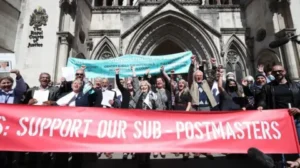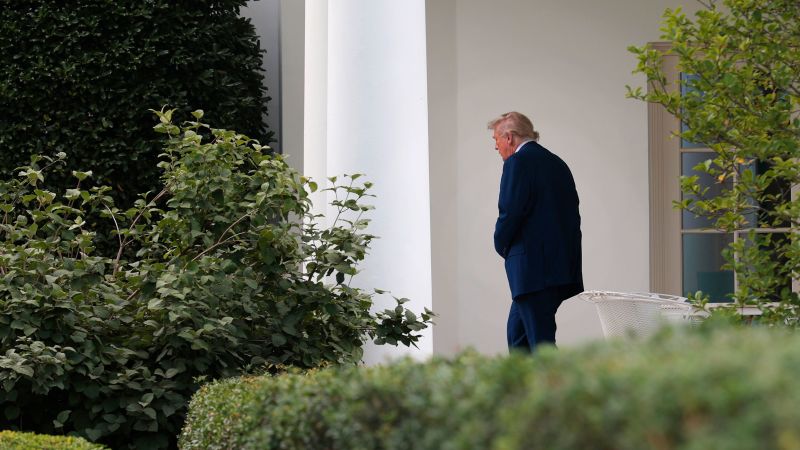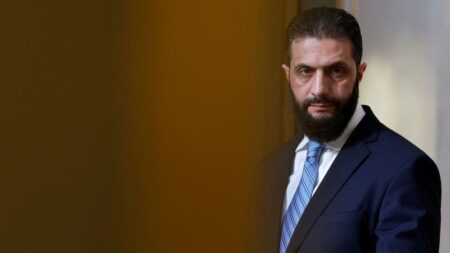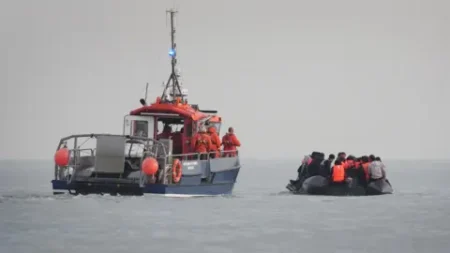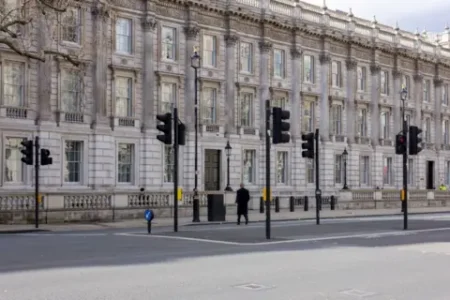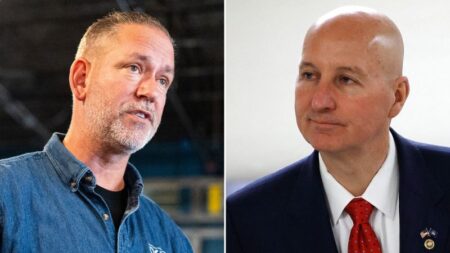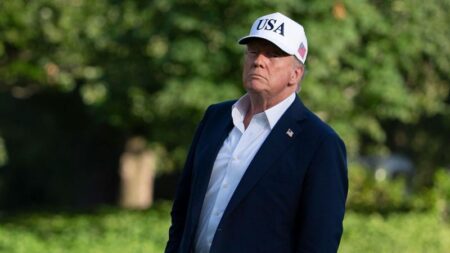When President Donald Trump embarks on a significant diplomatic mission to the NATO summit on Tuesday, he is set to present a freshly negotiated ceasefire agreement that he hopes will showcase his capability as a peacemaker. This development comes at a time when skepticism among his peers and within the conference itself looms large. The ceasefire, forged between Israel and Iran following a flurry of diplomatic engagements at the White House, signifies a pivot toward conflict de-escalation. Despite this, tensions remain, as Israel promptly accused Iran of missile strikes just hours after the ceasefire was to take effect, while Tehran refuted these allegations.
While departing the White House, Trump expressed his frustration over the apparent fragility of the agreement he had helped formulate, indicating a tumultuous backdrop for his European discussions. He described the two nations caught in a perpetual struggle, starkly reflecting on their misjudgments amidst prolonged conflict. Trump indicated that he was particularly dissatisfied with Israel’s actions, asserting that their immediate military response contravened the newly established truce. He claimed their bombardment was unprecedented and expressed his discontent as he left Washington for The Hague.
During a telephone conversation with Israeli Prime Minister Benjamin Netanyahu, Trump was reportedly direct about the actions needed to maintain the ceasefire’s integrity. As he took off for Europe onboard Air Force One, he remained optimistic, asserting that the ceasefire was holding and that new attacks by Israel would not proceed. Through a message on Truth Social, Trump conveyed a light-hearted notion of planes exhibiting a “Plane Wave” to Iran, emphasizing an intention for peace. His aspirations for the ceasefire extend beyond immediate relief, as Trump hopes it will also serve to validate his administration’s recent airstrikes on Iran’s nuclear facilities.
This development marks a pronounced moment in Trump’s international affairs strategy, particularly as he seeks to bolster his reputation as a global dealmaker. The ceasefire was facilitated with critical assistance from Qatar and appears to exclude European voices from the process, which has historically positioned itself centrally in diplomatic discussions. Trump’s declaration of the ceasefire as the conclusion of a “12 Day War” on social media hints at his inclination to highlight successes for political gains, especially as he steps onto the world stage amidst a backdrop of unresolved geopolitical tensions.
The NATO summit, shaped meticulously over months, aims to provide a platform for Trump that mitigates possible contention regarding the U.S. approach to the war in Ukraine. The summit’s agenda, characterized by a concise final statement, is specifically tailored to align with Trump’s expectations of elevated defense spending commitments—an initiative he firmly believes is crucial for NATO. Former U.S. ambassador to NATO, Kurt Volker, suggested that the objective for leaders attending the summit is to craft a positive narrative for Trump, validating his handling of the Israeli-Iranian situation while fostering commitments to defense initiatives.
However, the situation remains complex, with Ukrainian President Volodymyr Zelensky advancing in the pre-summit dialogue yet missing participation in the main summit proceedings—a poignant reminder of his aspirations for NATO membership, aspirations Trump has previously impeded. Already, fissures between Trump and European leaders regarding Ukraine threaten to disrupt NATO’s unified front in response to Russian President Vladimir Putin’s maneuvers.
While European leaders hold reservations about Trump’s approach toward the unfolding crisis, they attempted to project a sense of solidarity. Initially, there were fears that Trump might retract from attending the NATO summit altogether, concerned he would prefer to focus on Middle Eastern relations instead. Ultimately, with the Iran-Israel ceasefire in the balance, the president chose to press ahead to NATO, armed with a diplomatic achievement crafted in a highly charged atmosphere.
Traditionally, the U.S. President would engage in coalition-building with European counterparts after a significant military endeavor. However, Trump’s methodology leans towards unilateralism, having already dismissed collaborative European efforts toward resolving the Iranian conflict. In prior statements, he underscored Iran’s preference for direct discussions with the U.S. over intermediaries. Additionally, during the preceding G7 summit, he abandoned discussions on Iran for domestic matters, further slotting Europe out of his strategic calculations.
As Trump heads to NATO, his skepticism towards multilateral organizations and belief in direct diplomacy is glaringly apparent. He has long accused NATO of being a mechanism through which the U.S. bears disproportionate costs to safeguard nations across the Atlantic. He reiterated this attitude during a previous NATO summit, suggesting that U.S. engagement would hinge on European nations making significant strides in defense spending.
Amidst rising tensions stemming from the Middle East, the war in Europe poses increasingly significant challenges. As the summit unfolds, the juxtaposition of the ongoing crises in Ukraine and the fragile ceasefire will undoubtedly shape geopolitical dynamics. Trump’s assertive stance towards defense spending in NATO may yield results, yet the divergent narratives of international relations profoundly influence not just NATO’s present but its future engagements as well. The interplay of power, diplomacy, and conflict resolution remains central to Trump’s overarching strategies


